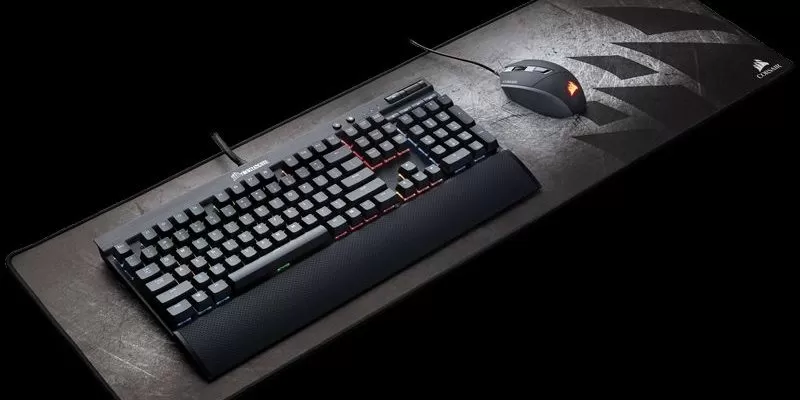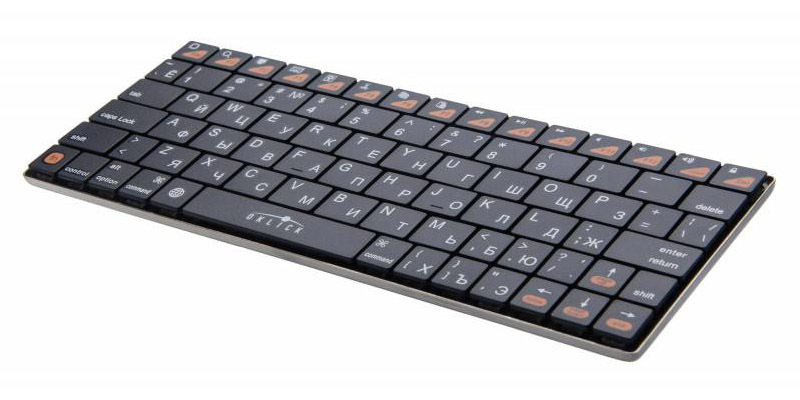
Compare mechanical keyboard and membrane
Mechanical keyboards are very often opposed to membrane keyboards — as if they have a minimum response time, and typing is a pleasure, and even cookie crumbs do not get stuck between the keys. True, such “input devices” cost more than one thousand rubles.
We will figure out whether it is worth overpaying and how a mechanical keyboard differs from a membrane one.
How keyboards work
A mechanical keyboard differs radically from a membrane keyboard — although both devices are designed only to enter text and commands into a computer. And these structural differences determine the usability.
How a mechanical keyboard works

Let’s start with the mechanical keyboard. In fact, such devices were the first designed to enter text into a computer. Then they turned out to be unreasonably expensive and now occupy only a small part of the market.
A mechanical keyboard is a set of separate switches, similar to those in switches or start buttons on a machine tool. In fact, each key is assigned a separate switch. When the button is pressed, the contact closes and the corresponding signal is sent to the control controller.
This configuration provides three important benefits. Firstly, the entire keyboard canvas is easily divided into separate buttons, so if one of them breaks for some reason, it will be possible to replace the switch in the service center.
Secondly, pressing is determined almost instantly, no characters are «lost» even with very fast typing. Key combinations, even very complex ones, are clearly defined. The «mechanics» are very simple — and this achieves a high level of reliability.
Finally, the mechanical configuration of the switch, which includes a plastic pusher and a metal spring, is durable. It can withstand up to 50 million clicks, so the device will last a couple of decades even with active daily use.
How a membrane keyboard works

The membrane keyboard is much simpler. It has two layers of contacts separated by a perforated rubber band or plastic sheet. Above them is the same membrane made of rubber or silicone, which gave the name to the device. And the key covers are attached to the membrane itself.
When the button is pressed, the membrane flexes and closes the contacts in the above layers. The controller polls the membrane several hundred times per second, checking which keys are pressed and which are not.
This configuration has three advantages. First, the price. «Membrannik» can be bought for several of dollars — and most of its cost will be «occupied» by the plastic case. Simplicity in production, assembly, proven technological process — all this makes membrane devices cheap.
Secondly, mass. Such «claves» are light, they are convenient to carry with you or move off the table if necessary. “Mechanics” is much heavier, you can’t just throw it in a backpack and go to work with your favorite input device.
And finally, the third advantage is silence. Such «claves» click only if they have to be hit with all their might. In general, they are suitable even for silent typing.
However, they also have several disadvantages:
-
You need to press a key. Moreover, the depth of travel for different models varies. And, in the end, after working for a long time on one device and then switching to another, you can experience a lot of inconvenience when typing;
-
Reliability is pretty average. Typically, membrane models withstand 5-10 million clicks, after which the membrane itself breaks — and the device will have to be thrown away.
Which is better — membrane or mechanical keyboard?
Now let’s compare these two types of input devices:
|
|
|
|
|
|
From 130 rubles
|
From 15$
|
|
|
3-5 million clicks
|
50 million clicks
|
|
|
Zero
|
High with accessories
|
|
|
When typing very fast, letters can be «lost»
|
Each click is determined
|
|
|
Almost always 3 mm
|
It is very diverse — there are both those that determine a light touch, and the keys of the model that require full punching
|
|
|
From 100-200 grams
|
From 500-600 grams
|
|
|
There are almost silent models, but in general — average
|
Usually clicks quite loudly, even with «quiet» switches
|
Thus, it cannot be said that one type is better than the other. Nevertheless, for people who spend at the computer from 3-4 hours a day, especially typing «canvases» of text, «mechanics» is definitely recommended.
The convenience of the «mechanics» is manifested by non-stop typing for more than half an hour, since it has a pleasant, natural key travel, and a clear tactile response. «Membranes» lose in this — even with high-quality models, with prolonged typing, due to the peculiarity of the membrane, the fingertips begin to get tired or hurt.
In addition, «mechanics» is also recommended for gamers — but already due to increased accuracy in recognizing keystrokes, including short-term ones or in the form of a key combination.
Добавить комментарий
Для отправки комментария вам необходимо авторизоваться.